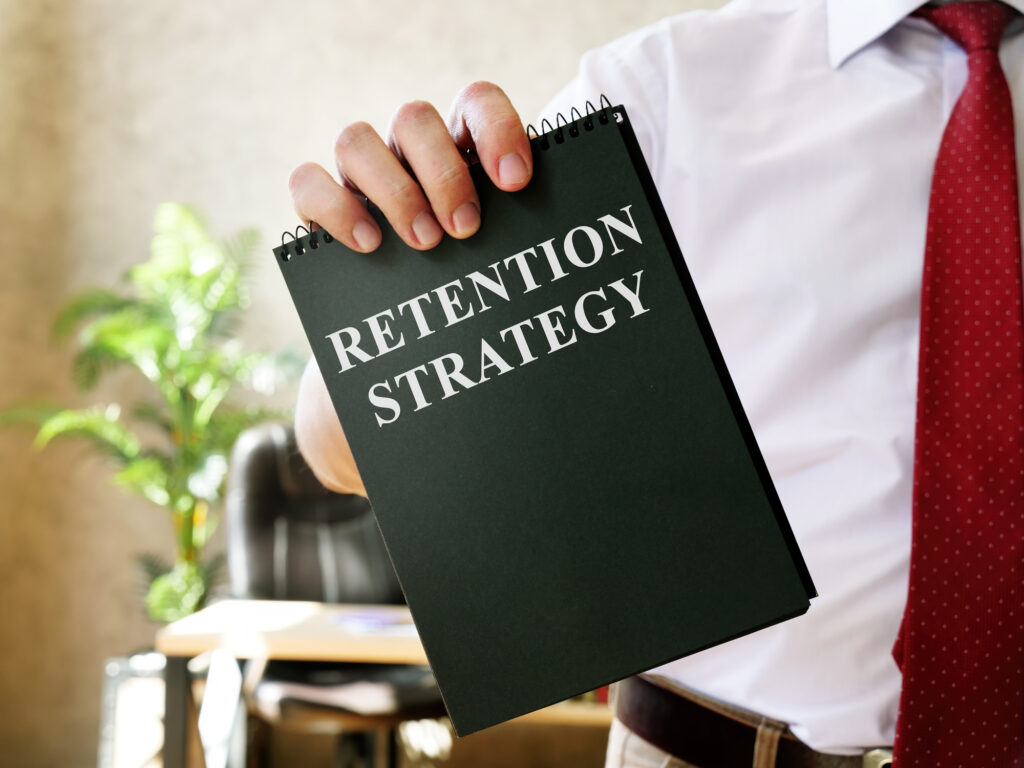8 Effective Retention Strategies for your School
 The months of January and February are usually focused on school leaders asking parents to re-enroll for another year.
The months of January and February are usually focused on school leaders asking parents to re-enroll for another year.
However, just because a family is enrolled today, doesn’t mean that they will continue their enrollment next year. Parents continually reflect on their experience in your school and evaluate the decisions they’ve made.
Over the years, I have written many blog posts and conducted several webinars and conference workshops on effective retention strategies. Schools that have an overall retention rate of 90% or higher are an indication of strong health.
The following are eight retention strategies that you should implement at your school:
1—Retention Leadership
Your school needs to have a champion for your retention strategies. Usually, it works best if retention is led by the head of school and principals since they have oversight of the day-to-day educational experience. While some retention strategies can be implemented by the admissions, enrollment, and marketing teams, the leadership can make the greatest impact on retention. After all, retention is more about a parent’s satisfaction with their child’s educational experience than it is about a specific strategy that can be implemented.
2—Re-Enrollment vs. Continuous Enrollment
Re-enrollment is the outdated annual process that asks your parents to opt in for another year. Continuous enrollment assumes the parent will return and asks the non-returning family to opt out instead. While there is more to these processes, there is a growing movement in schools to implement continuous enrollment. After all, this process makes more sense. Why place doubt in your parent’s minds by asking them if they will be returning to your school next year?
3—Selling the Next Grade
Parents should be continually sold on the value of continuing their child’s enrollment for the next grade and division – this is what Andy Lynch, CEO of North Star Marketing, refers to as the next Age-and-Stage™. Through transition grade-level meetings, events, webinars, and step-up days, you can reinforce the value of their continued enrollment. Mount Paran Christian School has implemented an annual Encounter Week to intentionally focus on retention from 8th to 9th grade. From tours to classroom instruction, clubs, leadership opportunities, class t-shirts, and more, their rising freshmen got a great taste of the high school experience. The week is an experience to get the students excited about high school.
4—Retention Early Alert System
Develop a spreadsheet of your students/families and identify any key indicators (predictors) that may affect their continued enrollment. By going through this process with your team, you will be able to focus on those families that are on the fence and reach out to them one family at a time to deal with the issues and work to keep them enrolled.
5—Roles of Faculty and Staff
Your faculty and staff are the key to retention. The reality of the everyday experience in your classrooms, on the stage, or the field, will make a difference in your school’s retention efforts. This is why your faculty and staff have the most important role in keeping your families enrolled. A high-quality experience will likely result in families that want to remain enrolled. It should always be a part of the training and discussion with faculty and staff to remind them of this key role.
6—Social Media Storytelling
Don’t underestimate the power of your social media presence in the life of your school community and its impact on retention. Most parents delight in seeing their children and families they know highlighted on your social channels. Your focus should be on Facebook and Instagram. At a minimum, you should post at least once a day with a goal of 2-3 times a day. Storytelling is a 24/7 focus that will influence retention through internal marketing.
7—Community Building and Buddy Programs
I believe that when your parents and students are connected in a community, they are likely to remain enrolled. Throughout the year, you will want to implement community events and activities. You should also regularly assess your students’ connection to a community through friendships, sports, music, band, drama, clubs, and more. In addition, your students and parents can connect with others in your school through a buddy program.
8—Measuring Satisfaction
Every school should conduct an annual parent satisfaction survey. This survey is a critical assessment, retention, and marketing tool that provides convenient, confidential feedback to school leadership and stakeholders. Your parents are your primary customers and it is important to measure their experiences at your school. This survey should satisfaction ratings, plans to continue enrollment through graduation, and areas needed for improvement. Every year, Enrollment Catalyst conducts many parent satisfaction surveys through its School Survey Solutions Program. You should have an annual plan in place to measure parent satisfaction.
Have you implemented these eight retention strategies at your school?
